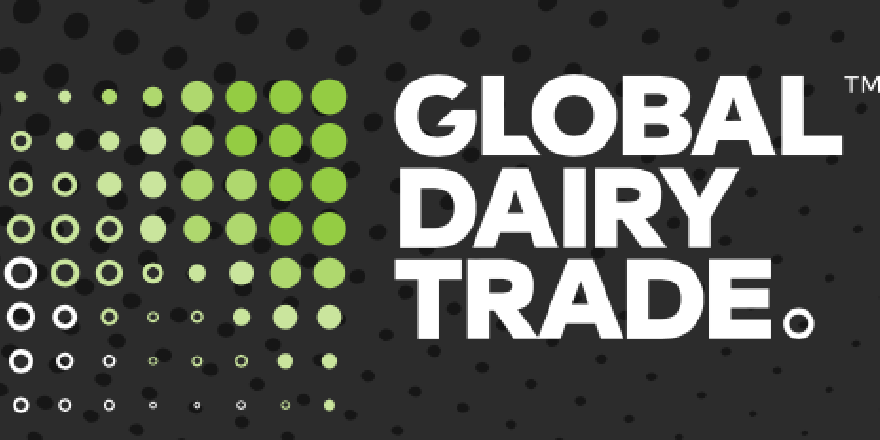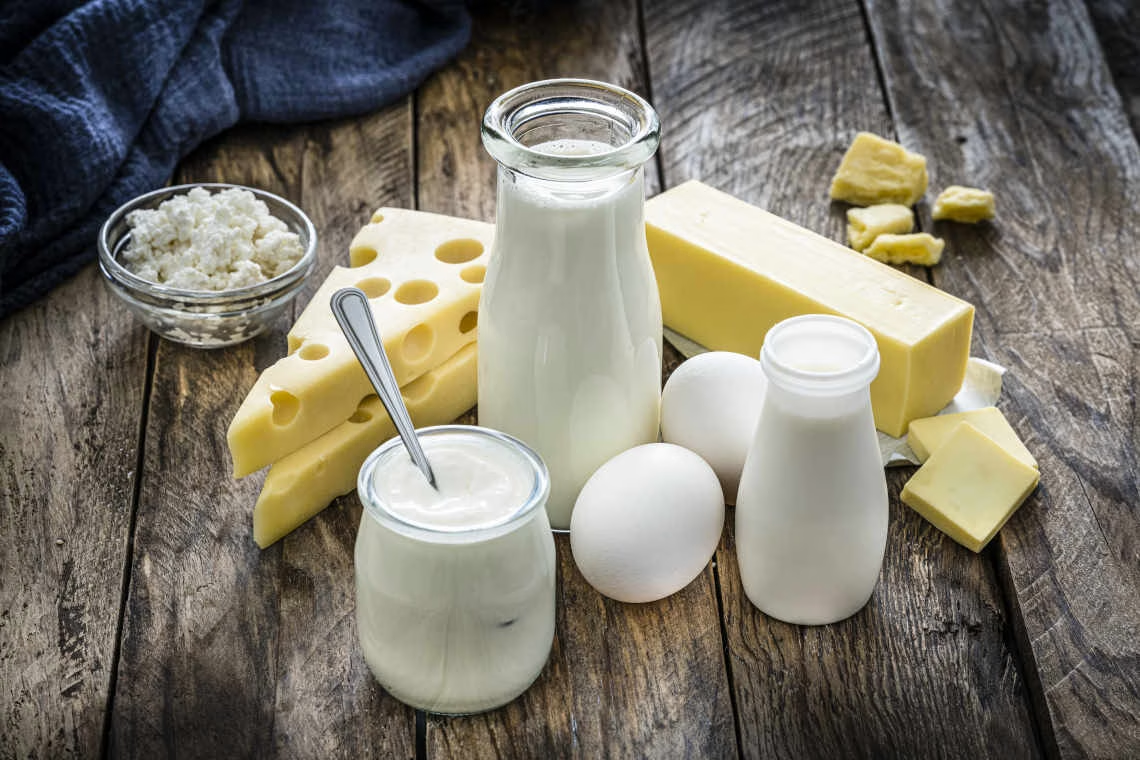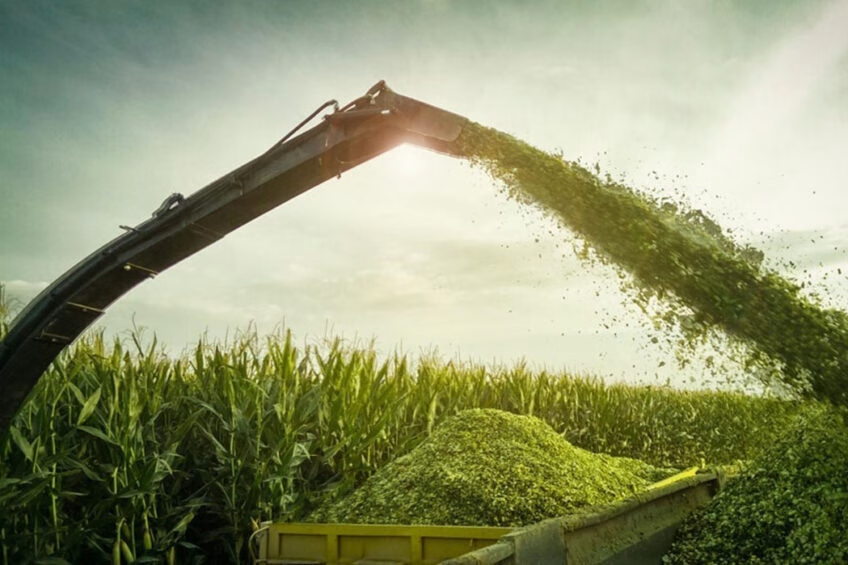Unlock dairy profits with precision feeding strategies. Discover how dairy farmers can boost efficiency and sustainability. Ready to transform your dairy farm?
In the fast-paced world of dairy farming, increasing efficiency and profitability is more than a goal; it’s a need. Precision feeding is a novel idea for dairy producers looking to reduce expenses without losing quality or sustainability. Because feed is sometimes your most significant investment, maximizing how and what you feed your cows is critical. Precision feed management is the constant practice of giving appropriate but not excessive nutrients. It is about making the best use of domestic feeds while being environmentally and economically sustainable. This method elevates feeding from a regular chore to a strategic operation, optimizing every dollar spent on feed. So, how does Precision Feeding work? What standards should you strive for? Which approaches are most likely to provide the best results? Stay with us as we examine the fundamentals of precision feeding, providing you with practical insights that might boost your farm’s productivity and profitability.
Leveraging Precision Technologies for Optimal Feed Efficiency
Precision feeding, as defined by the New York group’s Precision Feed Management paper, is a comprehensive and dynamic method centered on the ongoing process of giving appropriate, but not excessive, nutrition to dairy cows. The notion is about creating a balance in which cows get the nutrients they need without overfeeding, which may result in waste and increased expenditures.
A critical part of precision feeding is sourcing these nutrients from homegrown foods. This gives farmers more control over feed quality and content, resulting in more consistent and predictable nutrition for their herds. This strategy not only improves the nutritional condition of the animals but also considerably decreases reliance on bought grains, which are sometimes one of the most costly costs for dairy operations.
Furthermore, precision feeding strives to ensure environmental and economic sustainability. Environmentally, the approach helps to limit nutrient runoff into rivers, lowers greenhouse gas emissions, and guarantees that the nitrogen load on farms is balanced and controllable. Economically, it leads to more effective resource utilization, which improves dairy farming profitability by lowering feed costs, boosting milk production efficiency, and increasing farm revenue.
Why Precision Feed Management (PFM) Is Essential
Precision feed management (PFM) is more than a plan; it’s necessary for contemporary dairy production. The purchase of grain is one of the most expensive items for dairy farms, both financially and ecologically. Imported grains and other feed sources provide a considerable nutritional burden. If these nutrients are not appropriately balanced, they may be overfed to cows, resulting in unforeseen effects.
Overfeeding of nutrients may lead to their buildup in the soil. This isn’t simply about wasting money; the environmental consequences are significant. Nutrients accumulated in rivers, such as nitrogen and phosphorus, may cause algal blooms, damaging aquatic ecosystems and endanger water quality. This nutrient runoff is a visible manifestation of underlying inefficiencies in nutrient management.
Continuous improvement is the foundation of PFM. This entails regularly reassessing nutrient efficiency and aiming for the best possible usage of homegrown feed. Homegrown feeds provide the potential for cost savings and increased self-sufficiency. Still, they must be carefully managed to ensure their nutritional profiles are well understood and routinely included in the feeding regimen.
Furthermore, maximizing milk income over feed costs (IOFC) is critical. This metric—the financial return on feed investment—is closely related to total farm profitability. By constantly improving your PFM methods, you feed cows and drive your operation’s sustainability and economic viability. Thus, PFM is a continuous refining and optimization process that aligns with financial objectives and environmental responsibility.
Benchmark Numbers for Precision Feed Management
Let’s delve into the benchmark numbers essential for precision feed management on dairy farms. These metrics provide a crucial standard for maintaining efficiency and profitability:
- NDF Intake as a Percent of Body Weight: Aim for ≥ 0.9%.
- Forage as a Percent of Diet: Should be ≥ 60%.
- Homegrown Feeds as a Percent of Diet: Target ≥ 60%.
- Ration Phosphorus as a Percent of Requirement: Must be ≤ 105%.
- Diet Crude Protein: Keep it < 16.5%.
- MUN (Milk Urea Nitrogen): Maintain between 8-12 mg/dL.
- Calving Interval: Keep it ≤ 13 months.
- Cows Dead or Culled Less Than 60 Days in Milk Should be < 5% of the herd.
Expert Forage Harvest and Storage Practices
Harvesting and storing high-quality fodder is the foundation of effective Precision Feed Management (PFM). Proper forage harvesting at the correct maturity level increases production and enhances nutritional value. This provides a solid basis for fermentation, a critical procedure that retains the feed’s nutritional content while reducing spoiling concerns. Joe Lawrence will discuss these topics more in the text, providing nuanced views and actionable advice.
Proper storage and feed carryover are critical components of a more basic PFM design. Effective storage procedures, such as maintaining sufficient packing density and employing oxygen barrier polymers, assist in preserving forage quality by avoiding exposure to air and moisture. A well-managed feed carryover entails regularly supplying high-quality nutrients to your herd, resulting in higher milk output and improved overall health. By combining these strategies, dairy producers may create a streamlined and successful PFM system that maximizes economic and environmental sustainability.
Mastering Diet Formulation, Mixing, Delivery, and Intake
The journey to precision feeding winds through four pivotal areas: diet formulation, diet mixing, diet delivery, and diet intake. Together, they form the backbone of an efficient feeding program.
- Diet formulation requires an in-depth understanding of your animal’s nutritional requirements and the composition of your feeds. Without precise formulation, you risk either overfeeding or underfeeding, which can have costly repercussions.
- Diet mixing ensures that all the ingredients are combined uniformly. A well-mixed diet means that each bite your cows take is nutritionally consistent, reducing issues related to selective feeding.
- Diet delivery is about how the formulated and mixed diet is presented to the cows. This involves ensuring minimal losses from spoilage and shrinkage. The delivery method must also distribute the diet evenly across the feeding area so that every cow gets an equal opportunity to consume it.
- Diet intake focuses on the cows’ actual consumption. They know the dry matter intake—what the cows eat compared to what is offered. Monitor feed refusals and sorting behavior closely. These can indicate if cows are avoiding or preferring particular parts of the mix, which often signals formulation or mixing issues that need addressing.
Accurate diet delivery, mixing, and formulation are non-negotiable. Errors in these areas can lead to inefficiencies, wasted feed, and lost profits.
Boosting Efficiency with Precision Grouping Strategies
Grouping solutions for optimum accuracy center upon meeting the nutritional demands of different cow groups while maximizing feed efficiency and overall production. At its heart is the Total Mixed Ratio (TMR) principle, often used to offer a balanced meal with the same nutritional profile in each mouthful. While basic TMR is functional, it may be improved for greater accuracy.
Enter the TMR plus nutritional grouping. This strategy divides cows according to their dietary requirements, allowing for more customized diets. Such accuracy guarantees that cows do not get extra or insufficient nutrients, which benefits their health and the farm’s budget. Farmers may decrease feed wastage and expenses by grouping cows with similar nutritional requirements.
The partly Mixed Ratio (PMR) with nutritional categorization takes accuracy to new heights. In this innovative system, a base PMR feeds all cows, while unique concentrates tailor each cow’s diet to her needs. This method is wildly successful in robotic milking systems, where regulated amounts of concentrate are delivered depending on a cow’s lactation stage and production.
Grouping cows by lactation stage and parity provides additional benefits. Cows have various dietary requirements depending on their lactation stage or age. Still growing and developing, first-lactation heifers benefit significantly from being separated from adult cows. Multiple investigations have proven that this tailored grouping improves dry matter intake and production.
Furthermore, research has shown the economic advantages of such accurate nutritional categorization. A critical Jorge Santos Blanco (2020) study demonstrates how nutritional grouping may significantly boost revenue above feed expenditures. Blanco’s research showed that such tactics might increase income by more than $31 per cow yearly, highlighting the financial benefits of taking a more detailed approach to diet development.
Data-Driven Milk Production
Effective precision feed management hinges on meticulous data collection and analysis. Farmers must consistently monitor and track several critical metrics to fine-tune feeding strategies and ensure optimal dairy cow health and productivity. These include:
- Milk Production: Regularly measuring milk yield helps assess feed strategies’ effectiveness and determine necessary adjustments.
- Milk Fat and Protein Contents: These components provide insights into the diet’s nutritional value and the cow’s metabolic efficiency.
- Body Weight: Accurate body weight tracking is essential for proper feed planning and ensuring that each cow meets its nutritional needs without over- or underfeeding.
- Body Condition Score (BCS): The BCS is a vital health indicator that helps gauge whether cows are in appropriate physical condition. Deviations can signal dietary imbalances.
- Diet Components: Understanding the nutrient composition of forages and concentrates is paramount. Frequent analysis ensures the ratio remains balanced and Effective.
Frequent forage sampling and exact dry matter changes are essential for ensuring diet uniformity and cow health. Failure to address changes among forage crops might result in severe nutritional imbalances. The University of Wisconsin’s study emphasizes proper forage sample frequency. Forage sampling every month might be used to manage smaller herds of roughly 50 cows. In contrast, for herds bigger than 1000 cows, sampling every four days is advised. This regular sample helps prevent the hazards of over- or underfeeding, which protects the herd’s health and the farm’s revenue.
Precision feed management involves continuous data collection, analysis, and an adaptive action cycle. By following these guidelines and using data efficiently, dairy producers may promote a more sustainable and lucrative enterprise.
Unleashing the Power of Feed Additives
When going into the realm of Precision Feed Management (PFM), it’s critical to understand feed additives’ impact. These feed additives are chemicals added to the diet to fulfill particular activities that improve cow health, productivity, and farm profitability. Feed additives are essential in reaching PFM objectives by balancing nutritional profiles and filling gaps in the animal diet. They guarantee that the cow’s dietary requirements are covered without surplus, directly contributing to enhanced feed efficiency and reduced environmental impact.
Introducing the 5R Concept for evaluating feed additives simplifies decision-making and ensures that every additive brings value:
- Response: Understand how the additive works and whether it will function as intended on your farm. Is it enhancing milk production, improving milk components like fat and protein, or boosting overall cow health? Each of these responses needs clear identification.
- Return: The main criterion here is a benefit-to-cost ratio greater than 2:1. For every dollar spent on additives, at least two dollars must be returned, factoring in responsive and non-responsive cows to ensure total farm profitability.
- Research: Reliable and unbiased research forms the backbone of any decision. Verify that the additive in question is supported by robust scientific evidence, ideally from multiple sources, to ensure comprehensive, unbiased results.
- Results: This involves tracking the data on your farm. Implement the additive and monitor the outcomes rigorously. Efficient record-keeping lets you see whether the expected benefits materialize under your farm’s specific conditions.
- Right Timing: Ensure the additive is relevant and implemented correctly. Timing the introduction of an additive can be crucial – whether it’s addressing a specific challenge or during particular periods in the animal’s production cycle.
Examples of Feed Additives in Action:
- Correcting Ration Imbalances: Sometimes, the forage available might not meet your herd’s nutritional needs. In such cases, adding specific minerals or vitamins ensures that cows receive a balanced diet, optimizing their health and productivity.
- Mitigating Underperforming Management: When management practices fall short, perhaps due to labor shortages or unforeseen circumstances, additives like yeast cultures can help maintain rumen health and efficiency, thereby supporting milk production even during management hiccups.
- Enhancing Production Response: Adding products like rumen-protected amino acids can boost milk yield and quality, fine-tuning the animal’s performance to reach peak levels efficiently.
The Critical Role of Non-Dietary Factors in Precision Feed Management
While dietary considerations are central to Precision Feed Management (PFM), non-dietary factors are equally pivotal in maximizing dairy cow performance. These parameters don’t directly alter the nutrient composition of the feed but profoundly influence how well those nutrients are utilized and the herd’s overall health.
- Social Grouping: Cows, like people, thrive in socially harmonious environments. Grouping cows based on parity (first lactation versus mature cows) ensures that social dynamics do not impede feed intake. Research indicates that first-lactation cows grouped with their peers show increased intake and productivity, with eating time rising by over 11% and dry matter intake by 11.4%.
- Stocking Density: Overstocking is a significant stressor that can drastically reduce nutrient utilization. When cows are overcrowded, they spend less time eating and more time standing, which reduces rumination and can lead to health issues like lameness. Ensuring optimal bunk space allows all cows, including submissive ones, equitable access to feed, preventing the dominant cows from monopolizing resources. This balance is critical to maintaining consistent nutrient intake across the herd.
- Stress: Stress, whether from overstocking, poor housing conditions, or social hierarchy issues, negatively affects digestive efficiency and immune function. High-stress levels can lead to decreased feeding times and increased aggression at the feed bunk, further compounded by suboptimal environmental conditions.
- Water Supply: Water is the most critical nutrient, yet its importance is often underestimated. Adequate water supply and strategically placing water troughs throughout the barn ensure that cows remain hydrated, essential for optimal feed digestion and nutrient absorption. Poor water availability can quickly diminish feed efficiency and overall cow health.
- Time Away From Pen: Another crucial factor is the time cows spend away from their home pen, particularly during milking. Ideally, cows should not be away from their pens for more than 3.7 hours a day. Prolonged absence reduces time allocated for eating, drinking, and resting, leading to lower milk production and compromised health.
When managed effectively, these non-dietary factors enhance the cow’s environment, promoting better nutrient absorption and overall well-being. Each factor intertwines with dietary management to form an integrated approach to maximizing the efficiency and productivity of dairy operations.
How Precision Feeding Can Fuel Your Dairy Farm’s Profits
Implementing precision feeding strategies can significantly impact a dairy farm’s economic health, translating into substantial cost savings and potential profit increases. Feed costs are among the highest expenses in any dairy operation, often accounting for over half of the total production costs. By optimizing nutrient delivery and minimizing waste, farmers can achieve notable financial benefits.
Consider the case of a study led by Cornell University, which demonstrated that farms adopting precision feeding techniques saw an increase in income over feed costs (IOFC) by over $31 per cow per year (Cornell University). This adjustment alone can lead to substantial revenue uplift, especially for larger herds. For instance, a farm with 300 lactating cows could translate to a profit increase of $9,300 annually.
“Nutritional grouping can result in over $31 per cow per year higher income over feed costs when compared to a conventional grouping system,” notes Jorge B. Blanco, an expert from Cornell University.
Another real-world example comes from the University of Wisconsin’s findings, which showcased how frequent forage sampling and diet adjustments based on real-time data can prevent feed wastage. This practice alone could save farms with 600 dairy cows an estimated $81 per day, adding to nearly $30,000 annually (University of Wisconsin).
- Reduction in Feed Waste: Regular adjustments and precise feeding reduce the chances of overfeeding, saving substantial costs associated with excess nutrient supply.
- Improved Milk Production: Precision feeding aligns closely with the cow’s nutritional needs, enhancing milk yield and quality, thus increasing revenue.
- Environmental Benefits: Farmers can also minimize nutrient runoff by optimizing nutrient use, ensuring compliance with environmental regulations, and avoiding potential fines.
These economic impacts underscore the necessity and benefits of adopting precision feeding strategies in modern dairy farming. Such measures bolster the bottom line and promote sustainable and efficient farming practices.
Implementing Precision Feeding: A Step-by-Step Practical Guide
Plan Your Strategy
- Benchmarking: Gather baseline data on your herd, including milk production, body condition scores, feed intake, and forage quality. Use this data to identify areas for improvement and set realistic goals.
- Forage Analysis: Regularly sample your forage using NIR units. These handheld devices provide real-time insights into moisture and nutrient content, allowing immediate adjustments. Ensure the unit is calibrated correctly and periodically validated with lab tests to ensure accuracy.
- Grouping Cows: Divide your herd into nutritional groups based on lactation stage, milk yield, and body weight. This allows for more targeted feeding strategies and better resource use.
Monitor and Adjust
- Continuous Data Collection: Implement a system for regularly monitoring feed intake, milk production, and cow health. Use software tools to log and analyze this data, enabling you to make timely adjustments. Consider technologies like robotic milkers to get detailed production data.
- Diet Formulation Software: Utilize advanced diet formulation software to create and adjust rations. Tools like the CNCPS model from Cornell allow for precise nutrient matching and optimizing economic and environmental sustainability.
- Dry Matter Adjustments: Regularly check the dry matter content of forages and adjust rations accordingly. This ensures that cows are receiving the correct amount of nutrients without overfeeding.
Implement and Validate
- Feeding Management: Ensure your TMR mixers are correctly calibrated and that all feed components are thoroughly mixed. Accurate weighing and mixing are crucial for delivering a consistent diet.
- Storage and Handling: Store forages in a way that maintains their quality. Use proper packing and covering techniques to minimize spoilage and nutrient loss.
- Regular Assessments: Evaluate the effectiveness of your feeding strategy regularly. Review milk production data, body condition scores, and overall herd health. Make adjustments as needed to stay aligned with your goals.
Tips for Using Technology
- NIR Units: Invest in a high-quality NIR unit for on-the-spot forage analysis. Train your staff to use it correctly, and integrate the data it provides into your diet formulation process.
- Software Integration: Choose diet formulation software that syncs with your farm management system. This will streamline data entry and make it easier to track changes and trends over time.
- Robotics and Automation: If feasible, explore using robotic feeders and milkers. These technologies can provide precise feeding, reduce labor, and offer detailed data for continuous improvement.
The Bottom Line
At its foundation, Precision Feed Management (PFM) is about striking a careful balance between addressing cow nutritional demands and increasing farm productivity. PFM, by combining improved feeding techniques and thorough monitoring, may significantly improve dairy farm sustainability and profitability. We investigated essential benchmarks such as NDF consumption and crude protein levels in rations, the significance of professional forage collection and storage techniques, and in-depth diet design insights. The essay discussed accurate cow grouping tactics, the importance of data in milk production, the benefits of feed additives, and essential non-dietary elements. PFM is a continuous process that requires planning, execution, monitoring, and evaluation to improve farm efficiency and production. Consider if your present feeding plan fully uses your farm’s potential, and take steps toward more creative dairy farming by combining nutrition, management, and technology. Martin Luther said, “The milkmaid and her pail of milk are the beginning of all wealth.” In today’s world, precise feed management is critical to success.
Summary:
Precision Feeding is essential for whole-farm efficiency in modern dairy operations. This article dives into feed costs, animal performance, and nutrient management. Dairy farmers will learn how precision feed management (PFM) can boost profitability and sustainability by integrating feed and forage practices. Implementing PFM can lead to $31 more per cow annually, reducing costs without compromising quality or sustainability, and involves providing adequate nutrition without overfeeding, reducing waste and costs. Sourcing nutrients from homegrown feed allows more control over quality and content. PFM improves animal health, reduces reliance on expensive grains, limits nutrient runoff, lowers greenhouse gas emissions, and balances nitrogen load. It also boosts profitability by lowering feed costs, increasing milk production efficiency, and raising revenue. Continuous improvement in PFM involves regular assessments and utilizing homegrown feed, relying on expert forage harvest and storage practices, and managing non-dietary factors like social grouping, stocking density, stress, water supply, and time away from the pen.
Key Takeaways
- Precision Feeding integrates feed and forage practices to enhance profitability and sustainability.
- Adopting PFM can result in a $31 per cow annual increase in profitability.
- PFM minimizes overfeeding, reducing waste and lowering feed costs.
- Sourcing nutrients from homegrown feed offers better control over quality and nutrient content.
- Proper implementation of PFM improves animal health and reduces dependency on costly grains.
- PFM practices limit nutrient runoff and reduce greenhouse gas emissions, promoting environmental sustainability.
- Effective nutrient management within PFM balances nitrogen loads and prevents nutrient loss.
- By optimizing feed costs and enhancing milk production efficiency, PFM boosts overall farm revenue.
- Continuous improvement in PFM requires regular assessments and expert forage harvest and storage practices.
- Managing non-dietary factors such as social grouping, stocking density, and water supply is vital for PFM’s success.
Learn more:
















